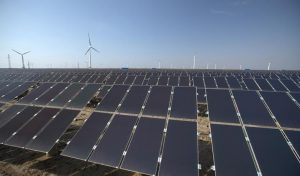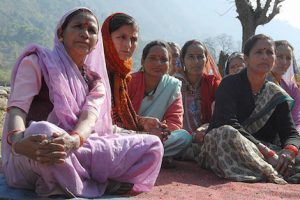Last year the Chinese solar sector was in crisis – many Chinese firms, including sector leader Suntech, were in a dire financial situation due to over-capacity. The sector was built on exports to the European Union (EU), and in many cases heavily locked into long term contracts for various components. In 2012 trade dried up because of recession and the end of Feed in tariffs (which aim to encourage investment), leaving many Chinese companies with no other siginificant revenue stream. But only a year later, there are already claims of a recovery in the sector.
At the start of December Liang Zhipeng, deputy head of the National Energy Administration’s (NEA) New and Renewable Energy Department told reporters that “solar PV is green energy, and [despite its problems] represents the direction for the future.”
One potential source for optimism is that the EU has produced a new strategic document on environmental and energy subsidies, and plans to include renewable energy development in overall energy plans. Solar PV firms, like the now insolvent Suntech, could benefit by exporting panels to European countries if there were new subsidies. In addition, China is working to help its renewable energy firms expand overseas. This includes wind and bio-energy, but the main effort will be with solar PV.
The China Minsheng Bank, the Industrial and Commercial Bank of China and the Agricultural Bank of China have all followed the China Development Bank’s lead in supporting renewable energy firms expanding overseas. Bao Yudong of the Minsheng Bank’s trade and finance department told chinadialogue that there was no limit to the bank’s funding for solar PV.
The recovery is due to a combination of factors, according to Xing Yiteng of the NEA’s New Energy Department. One is that companies now have more robust supply chains and are more resilient. Another is increasing demand in the EU, US and Japan. Also, the NEA sent an important policy signal in July, with a State Council circular on promoting development of the solar PV sector.
“National plans already included installed solar capacity of 21GW by 2015, but this was increased to 35GW – a large increase,” said Xing.
Wang Zhijun of Baysolar said that there is money to be made at all stages of the solar PV cycle – project development, construction and ongoing operation. Therefore many international companies are happy to invest.
Even so, some are still cautious. Lu Chuan, deputy president of Zhejiang Astronergy, isn’t sure about talk of a recovery – he thinks policies have improved, but it’s too soon to decide if the market has recovered. According to Liang Zhipeng, China’s solar PV sector still faces four challenges: a lack of government coordination, with the companies working alone or even competing unfairly; funding difficulties; lack of international presence; and high investment risks.
Liang added that firms are not familiar with the laws, policies and standards of other nations, and it is time consuming for them to learn. To this end the NEA has set up a new body to provide relevant services, as well as a platform for information on overseas laws and policies.






